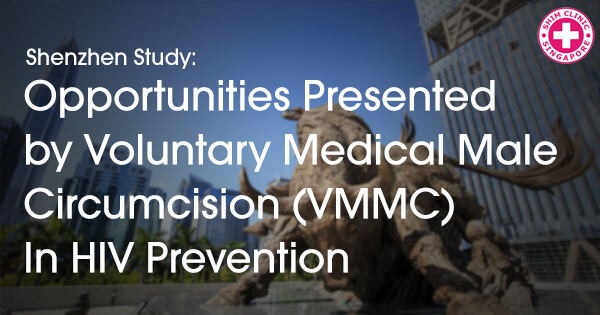Voluntary Medical Male circumcision (VMMC) has been shown to be an effective HIV prevention method in China. Unfortunately, this method is underutilised and there’s currently no study investigating the acceptability of VMMC among men with sexually transmitted diseases referred to as MSTDP and who are at high risk of acquiring HIV.
In China, there have been reports on increased number of new HIV cases caused by heterosexual transmission. Studies have indicated that there are some STDs that increase the risk of HIV transmission. World Health Organization (WHO) and the Joint United Nations Programme on HIV/AIDS (UNAIDS) recommend VMMC as prevention measure of HIV-1 infections among heterosexual men.
Randomized trials conducted in the past have shown that VMMC can reduce the risk of HIV-1 transmission by over 50%. It is also believed to prevent other types of STDs such as human papillomavirus, syphilis and trichomonas vaginalis among heterosexual men. VMMC can also reduce the risk of STDs transmission among their female partners.
Despite these facts, male circumcision prevalence in China is below 5% compared to 75% in U.S., 60% in Republic of Korea and 90% in Philippines. The low prevalence is despite VMMC being a highly accessible procedure performed in most of the Chinese hospitals. Although VMMC in China is not a popularised practice, no stigma is placed against circumcised people.
Emotional Representations
Emotional Representation (ER) is the extent to which a patient is emotionally affected by an illness. Emotions include anger, guilt or shame. ER determines behaviors that may affect health-related outcomes. So far no study has been conducted to show the connection between STD-related ER and VMMC. ER has potential implications on promotion of VMMC among MSTDP.
It’s for this reason that researchers Zixin Wang, Tiejian Feng, Joseph T. F. Lau and Yoona Kim based at JC School of Public Health and Primary Care, The Chinese University of Hong Kong, Shenzhen Research Institute, Shenzhen Center for Chronic Disease Control and Centre for Medical Anthropology and Behavioral Health, Sun Yat-sen University, decided to investigate the acceptability levels of VMMC.
The Study
The study involved participants recruited from the three largest governmental STD testing clinics in Shenzhen from October 2011 to March 2012. To participate, the respondents had to be Chinese male 18 years old and have a diagnosis of any one of these STDs
- Primary, secondary or latent syphilis
- Genital warts
- Genital herpes
- Gonorrhea
Men who have ever engaged in oral or anal sex with men and HIV positive ones were excluded from the study. This is because efficiency of VMMC is only possible in HIV negative heterosexual men and MSM or HIV positive men. A total of 350 MSTDP were studied through the use of an anonymous face-to-face interview.
Those who participated in the study were offered a compensation of 50 RMB which is approximately 8USD. Uncircumcised participants were informed that VMMC could reduce the risk of HIV transmission by 50% and then asked whether they would agree to take up VMMC in the next six months.
Study Outcomes
Majority (74.6%) of the participants were 40 years old, 66.9% were married or living with a female partner and 70.8% were not a permanent resident of Shenzhen. 3.4% of the respondents had primary syphilis, 2.6% had secondary syphilis, 17.1% had latent syphilis, 40.9% had genital warts, 15.9% suffered from genital herpes and 20.3% had gonorrhea.
46.1% of the participants said they would consider VMMC in the next six months. 63.0% agreed that they felt depressed because of their STD, 65.9% felt upset, 60.1% felt anxious, 59.1% were afraid and 47.1% felt angry. Only 36.4% didn’t feel worried about their STD.
The researchers observed that younger MSTDP showed higher acceptability of VMMC than the older MSTDP. The researchers therefore suggested the use of different strategies when promoting VMMC to different age groups. Another characteristic that enticed the men to consider VMMC was overly long foreskins. Also of interest, was the fact that MSTDP with multiple episodes of STD infection showed higher acceptability of VMMC.
Recommendations of the Study
The researchers recommend that STD health providers should make sure that they inform patients at risk of HIV of the opportunities posed by VMMC in HIV prevention among male heterosexuals. They also recommended future implementation programs to be conducted in various STD clinics while utilizing the findings their study.
Our Thoughts on the Study
Any new innovations that increase the chances of reducing HIV transmission like HIV PEP, HIV PrEP and frequent STD testing is a welcome progress that should be taken into consideration. It’s sad that even though VMMC has been proven to reduce HIV transmission, men in China at risk of acquiring HIV are yet to take it into serious consideration.
Read original study here: http://journals.plos.org/plosone/article?id=10.1371/journal.pone.0149801

